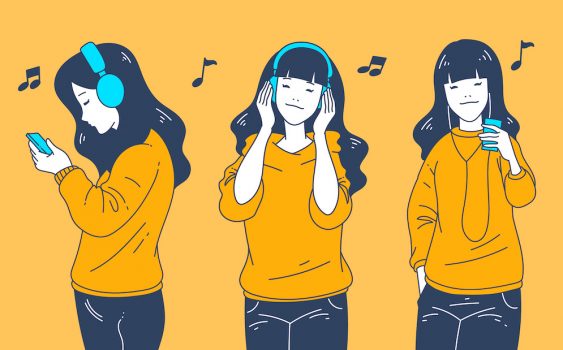Sound & Vision: The Intersection of Audio and Video
by on 26th Jul 2023 in News

Audio and video have experienced exponential growth in recent years, with no signs of slowing down: between 2022 and 2023, global podcast listeners swelled by over 40 million, while the global video market is forecast to grow at a CAGR of 18.45% until 2030. While both profitable individually, how are video and audio advertisements intersecting? And what does this mean for the ad industry?
The power of audio-visual synchronisation
In response to brands' ongoing quest for captivating content, publishers are increasingly harnessing the power of audio and video as potent tools for storytelling and monetisation. By successfully integrating the two, brands are able to create emotionally resonant campaigns. Spotify recently found that running audio visual advertising increases ad recall by 90% and results in a 2.2x increase in brand awareness. So while each format has its own advantages, it seems running both formats simultaneously makes for the most effective approach: the effectiveness of ads is heightened when they are both seen and heard.
Sound on vs sound off
As we recently learned at ATS London 2023, most videos are played with the sound off. Although presenting a challenge, there are some advertisers utilising this as an opportunity to use audio more carefully and creatively. By leaning into highly visual storytelling, brands and advertisers can convey their message, with audio serving as an enhancement – Huggies’ “Hug the Mess” video ad for Facebook is a really strong example of this. Although 25% of people watch ads on mute even in private spaces, there will always be an audience who turn up the volume, meaning audio is crucial to maintaining people’s attention once video has grabbed it.
Cross-platform consistency
It goes without saying that brand identity is critical for any company hoping to stand out in the market and build a customer base. While brand identity is typically considered a visual asset – think the Nike tick or the Starbucks siren – the role of audio should not be understated. Using the same music across multiple ads, for example, can significantly increase brand attribution, helping the advert to stay with audiences long after it’s over. For McDonald’s, audio was critical to reinvigorating its brand. The company launched the 5-note “I’m lovin’ it” jingle in 2003 following six consecutive quarterly losses, with the intention of running the slogan for two years. Twenty years on and the jingle is now an integral part of McDonald’s brand, while the company itself is now valued at USD$197bn (~£152bn). With ads that closely link sound and visuals increasing memory encoding by around 14%, it’s evident that combining video and audio can have a dramatic impact on how audiences view and engage with brands.
Social media blurs the boundaries
Another of the most identifiable examples of the intersection of audio and video is TikTok. Although fundamentally a video app, research indicates the audio has an unshakeable presence in TikTok. According to a report from TikTok and Kantar, 73% of users pay attention to audio ads, with 88% claiming sound is essential to their experience of the app. Thanks to TikTok’s popularity amongst Gen Z in particular, the app may offer brands and advertisers a chance to reach what is considered the ‘holy grail’ of demographics. Although Zoomers are considered the most digitally-engaged demographic yet, research indicates muted engagement with audio content, such as podcasts and music streaming. Short form video, meanwhile, has only seen its popularity soar amongst Gen Z, with the medium aligning with the generation’s reported 8-second attention span.
Although promising mediums in their own right, there are clearly instances where audio and video can enhance each other. While it would be a mistake to say that either is wholly dependent on the other, marketers are recognising where the two formats can be effectively combined for an engaging ad experience, and will no doubt be keeping their eyes open and ears to the ground for updates in these spaces.
AdvertiserAdvertisingAudioBrandsVideo








Follow ExchangeWire